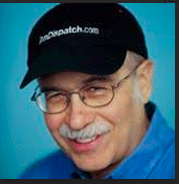Step 4. Discipline faculty dissent.
Students have not been the only targets of such repression. They have been joined by faculty and other employees of colleges and universities, who have also faced disciplinary action for standing up for the rights of Palestinians. By one count, more than 50 faculty members have been arrested, while hundreds more have been disciplined by their employers.
The backlash began last fall with the suspension of two educators at the University of Arizona, then ramped up with the summary firing of two teaching assistants at the University of Texas at Austin. Their offenses? Sharing mental health resources with Palestinian, Muslim, and Arab students, who had specifically requested them in the wake of October 7th.
Further controversy attended the suspension of a tenured political science professor, Abdulkader Sinno, at Indiana University following an "unauthorized event" held by the school's Palestine Solidarity Committee (which Sinno advised). Then came the removal of a noted Palestinian-American artist and activist, Amin Husain, from his adjunct position at New York University.
The University of Florida, for its part, circulated a directive threatening that "employees will be" separated from employment" should they be "found responsible for engaging in prohibited activities," including "disruption," indoor demonstrations, or outdoor encampments.
And Washington University in St. Louis, in April, placed six employees on leave after they were accused of participating in a Gaza solidarity protest and allowing "unauthorized persons" onto campus. That same day, another Palestinian-American professor, Steve Tamari, of Southern Illinois University, had nine ribs fractured and one of his hands broken while exercising his right to film the police.
Step 5. Lock the community out, but let the vigilantes in.
In the face of sustained student protest, universities have converted themselves into heavily guarded, gated communities, each with its private security force, and each with its own laws to enforce. "Harvard Yard will be closed today," read a typical text, in bold red letters hanging from Johnston Gate. "Harvard affiliates must produce their ID card when requested."
Other schools have responded to the encampments with a new architecture of control, extending from the metal barricades erected around George Washington's University Yard to the plywood walls now surrounding New York University's Stern School of Business. Still others, like Columbia, went as far as to cancel their major commencement ceremonies, given "security concerns."
At the same time, the private firms entrusted with the public's safety on college campuses have failed to intervene to keep far-right agitators out. Instead, as seen at the University of California, Los Angeles, and elsewhere, they have allowed vigilante violence to run wild.
At UCLA, on the night of April 30th, a gang of anti-Palestinian militants, wearing white masks and bearing blunt instruments and incendiary devices, were permitted to terrorize the school's Palestine Solidarity Encampment for more than three hours before public officials felt compelled to take action. At least 16 serious injuries were reported. Not one of the attackers was detained.
"At first, I couldn't understand why," reported one eyewitness to the bloodshed. "But an hour in, and then two hours in, and then three hours in, it just reached the point where I was like, 'UCLA knows this is happening, and they don't care enough to protect their students.'"
"I thought I was going to die," recalled another. "I thought I'd never see my family again."
Step 6. Call the cops. Incite a riot.
Again and again, administrators have turned to the baton-wielding arm of the law to sweep Gaza solidarity encampments off school grounds. In calling the riot squads out on their own students, they have launched the most wide-reaching crackdown on campus protest in more than half a century, with some 3,000 arrests and still counting.
The military-style raid on Columbia's Morningside campus, on April 30th, was just one case in point. It was one I watched unfold with my own eyes a few paces from occupied Hamilton Hall (or "Hind's Hall"). It started with a group of students linking arms and singing "We Shall Not Be Moved," and ended with 112 arrests and one gunshot fired from an officer's Glock 19.
(Note: You can view every article as one long page if you sign up as an Advocate Member, or higher).





